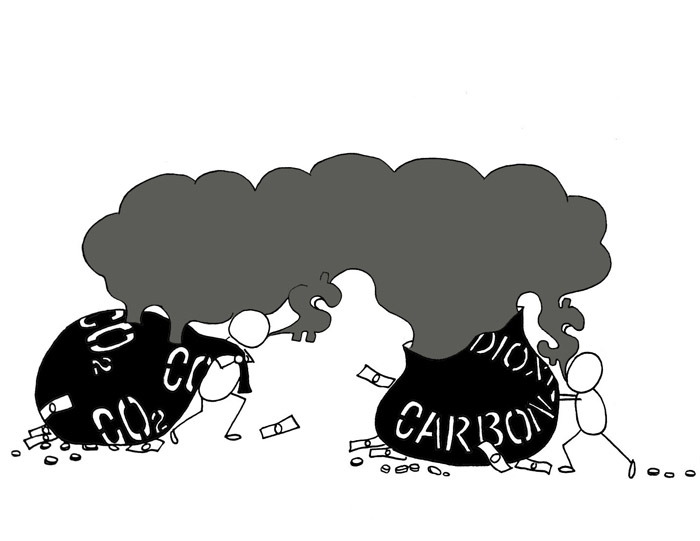“Climate change is not fiction.”
So began Premier Philippe Couillard at the NYC Climate Summit on Sept. 22, the largest effort yet at galvanizing action for climate change. The event featured the likes of Ban Ki-moon and President Obama.
Couillard’s speech echoed those of the others present at the summit by stressing the need for action, notably touting Quebec’s efforts at creating a carbon market newly unified with California. According to the premier, establishing this system sends a strong signal to businesses and consumers alike about the importance of phasing out carbon use.
The Environmental Defense Fund, an NGO dedicated to the carbon reduction system, describes the carbon market as an “economic incentive to pollute less.” The government auctions off a fixed, or capped, limit of credits—each represents a set amount of carbon—to firms. If the firms exceed the carbon limits of the credits they buy, they are forced to buy more of these credits from other firms who have used less than them. Firms are thus punished for excessive carbon pollution, while those that pollute less are rewarded.
Though complex in its execution, the goal of the system is simple: To reduce emissions by targeting major emitters.
According to the premier, more than 98 per cent of Quebec’s energy is produced through renewable sources. As such, Quebec can afford to use a cap-and-trade system. However, Couillard himself admits that the current structure is not economically feasible and needs new members. He is convinced that other states will join, especially those from New England who are already part of a group called the Regional Greenhouse Gas Initiative (RGGI).
Kelly Speakes-Beckman, chair of the RGGI, dismissed the notion as unrealistic.
“We’ve had no discussion of any states leaving RGGI, either to go to California or elsewhere,” Speakes-Beckman said in an interview with Bloomberg. Only Vermont has demonstrated interest, leaving the newly formed market dangerously isolated.
But Quebec is not alone in its struggle. The European Union’s Emission Trading System (ETS) is the biggest of cap-and-trade systems. Considered by many to be the proof of a way to regulate carbon emissions using a free market, the ETS is now burdened with a surplus of about two billion emission allowances, equivalent to a year’s supply, according to UK’s Secretary of Energy and Climate Change Ed Davey. Companies therefore have little incentive to scale back their carbon emissions. Davey proposes to cut the surplus of credits and decrease the amount of credits auctioned, as well as strive to strike a better balance between fairness, cost-effectiveness, and simplicity.
These proposals, seemingly no-brainers, have yet to be implemented, and those submitted by the ETS are far too mild in comparison.
There are other issues at play, especially in including the aviation industry in carbon markets. As an international industry, the ETS’s inclusion of foreign aircraft into consideration on its carbon markets sparked outrage.
According to a report by the International Emissions Trading Association, “Various U.S. airlines […] arguing that the application of the ETS to foreign-based operators breached customary international law.” Although the ETS’s decision was upheld, there is still considerable controversy over the matter.
Whether or not Quebec will follow the European Union in forming a widespread trading system still remains to be seen. Quebec and California may be leading the way for a North American carbon market, but there are still significant challenges to overcome in order to achieve a low-carbon economy.








